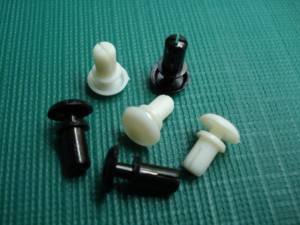 Building homes and corporate or commercial establishments will always call for the use of wires and other components to help deliver electricity, telecommunications capabilities, and other utilities to the space. Most of these wiring’s will be kept out of eyesight or reach so that they will not interrupt the flow of movement through the spaces, create tripping or other safety hazards, or produce an eyesore for the people who will be frequenting the place. Molded wire protection products make these possible.
Building homes and corporate or commercial establishments will always call for the use of wires and other components to help deliver electricity, telecommunications capabilities, and other utilities to the space. Most of these wiring’s will be kept out of eyesight or reach so that they will not interrupt the flow of movement through the spaces, create tripping or other safety hazards, or produce an eyesore for the people who will be frequenting the place. Molded wire protection products make these possible.
An important component of wire protection is proper fastening. Products that are specially designed to enable proper fastening throughout a wide range of applications will make the task of keeping wiring’s organized and out of the way easier. One such example of an ideal fastening provision is the nylon rivet.
What is it?
Nylon rivets are meant to fasten two or more pieces of material together; examples would be plastic sheets, fiberglass, sheet metal, composition materials, and PC boards. They can also be used to fasten different substrates such as stone, gypsum, brick, lumber, concrete, steel, or even wood and metal frameworks.
Why are they recommended for use?
Those in need of convenient and reliable fasteners will find using nylon rivets to be ideal because they are ready for immediate use. Unlike traditional fasteners used for building and other applications (like nails and screws), nylon rivets do not require an additional tool to drive them into place (like hammers and screwdrivers). All you need to do is stick a rivet into a ready drilled or punched hole, press the rivet down with a finger, and its legs will automatically expand to securely fasten two components together.
Removing the rivet, should you need to do so, is equally simple. For most snap rivets, all you need to do is pull on the rivet head section and the rivet will quickly release. This is especially notable in releasable type rivets which can be used multiple times rather than just once.
Another advantage of using rivets is that they are assigned a flammability rating so users can determine their level of heat resistance and suitability for specific applications.
Safe and effective components
Nylon rivets are excellent fasteners for materials of various thicknesses. Aside from being extremely simple to install on one side of the work piece, these rivets are also carefully designed to provide security even in vibrating or considerably mobile conditions. And because they are also essential to electrical or industrial applications, it’s to the user’s advantage that nylon rivets are able to resist corrosion and effectively insulate. And of course, it doesn’t hurt that the rounded or flat rivet heads provide a finished, clean look for your fastened materials. All in all, nylon rivets really work well at keeping things together.
